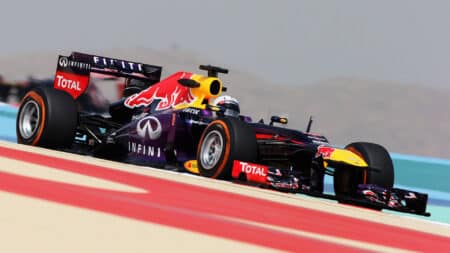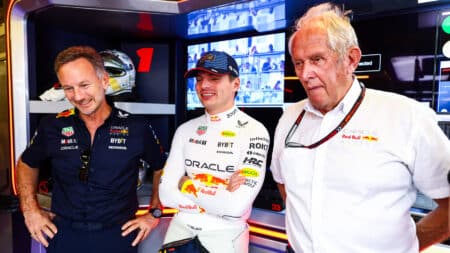
Why isn't 2025 F1 season as close as predicted? The past explains why
McLaren's breakthrough in a near-four-year-old ruleset shows F1 rules convergence is a myth – just like Sebastian Vettel, Red Bull and Renault did in 2013, writes Mark Hughes
Formula 1 cars will adopt the halo as of 2018
The FIA has confirmed the halo protection system will be introduced to Formula 1 from the 2018 season onwards.
All 10 teams attended the latest Formula One Strategy Group meeting where the halo cockpit protection concept was discussed. The FIA has stated that ‘With the support of the teams, certain features of its design will be further enhanced.’
The Halo has been the most successful of a number of solutions considered, Sebastian Vettel tested the alternative shield cockpit screen as recently as last weekend at British Grand Prix. He complained of dizziness and reduced visibility, seemingly bringing an end to the FIA’s recent prioritising of the concept. The shield was expected to conduct a full test at Monza in September.
Also discussed at the Strategy Group meeting was the continued rising costs of competing, and a new working group has been put together to devise new solutions to reduce costs.
The FIA will also be conducting studies to assess measures aimed at ‘improving the show’.

McLaren's breakthrough in a near-four-year-old ruleset shows F1 rules convergence is a myth – just like Sebastian Vettel, Red Bull and Renault did in 2013, writes Mark Hughes

Madrid finally has a consortium to build the new Formula 1 circuit that will host the 2026 Spanish GP

Helmut Marko caused a stir after the Bahrain GP with his worries that Max Verstappen could leave Red Bull early. But how real are those fears?

Ayrton Senna’s tragic final races in 1994, marked by controversy over illegal traction control and his relentless pursuit of excellence in a challenging car, remain a poignant chapter in F1 history, as Matt Bishop recalls